GPCR/G protein
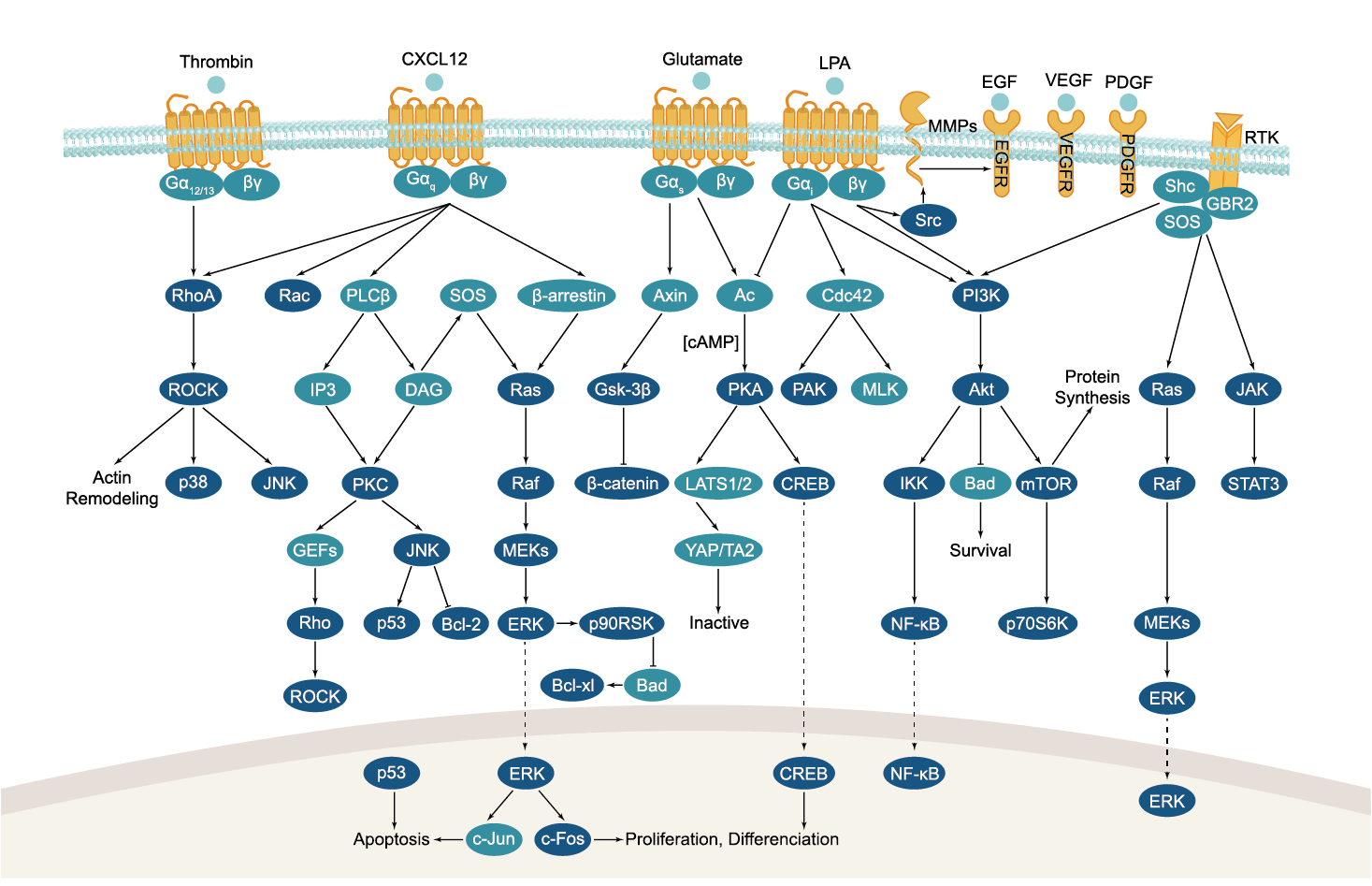
All GPCRs share a common seven trans-membrane structure. GPCRs are associated with heterotrimeric G-proteins which are GTP-binding proteins made of alpha, beta, and gamma subunits. When a ligand binds to GPCR, it activates the attached G-protein, the GDP is replaced with GTP. The activated G-protein then dissociates into an alpha and a beta-gamma complex which activates downstream signaling pathways. These intracellular signaling pathways include cAMP/PKA, calcium/NFAT, phospholipase C, protein tyrosine kinases, MAP kinases, PI-3-kinase, nitric oxide/cGMP, Rho, and JAK/STAT.
GPCRs are one of the most important therapeutic targets for various diseases, over 30% of all modern medicinal drugs target this family. Aberrant GPCR functions are involved in pathological conditions such as neurological, immunological and hormonal disorders. A large number of GPCRs have been identified, but whose ligands are not known, are classified as orphan receptors.
-
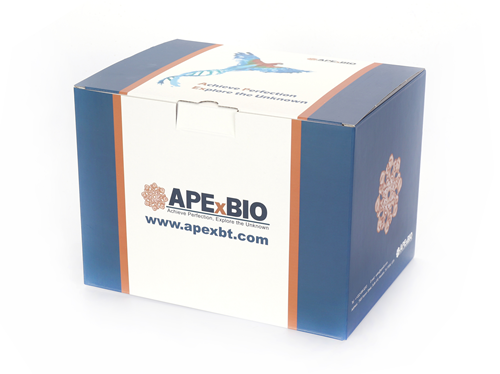 B5280 GIP (1-39)Summary: Endogenous truncated form of the incretin hormone GIP
B5280 GIP (1-39)Summary: Endogenous truncated form of the incretin hormone GIP -
 B5281 GLP-2 (human)Summary: intestinal epithelium-specific growth factor
B5281 GLP-2 (human)Summary: intestinal epithelium-specific growth factor -
 B5282 GLP-2 (rat)Target: GLP-2 receptorSummary: intestinal epithelium-specific growth factor
B5282 GLP-2 (rat)Target: GLP-2 receptorSummary: intestinal epithelium-specific growth factor -
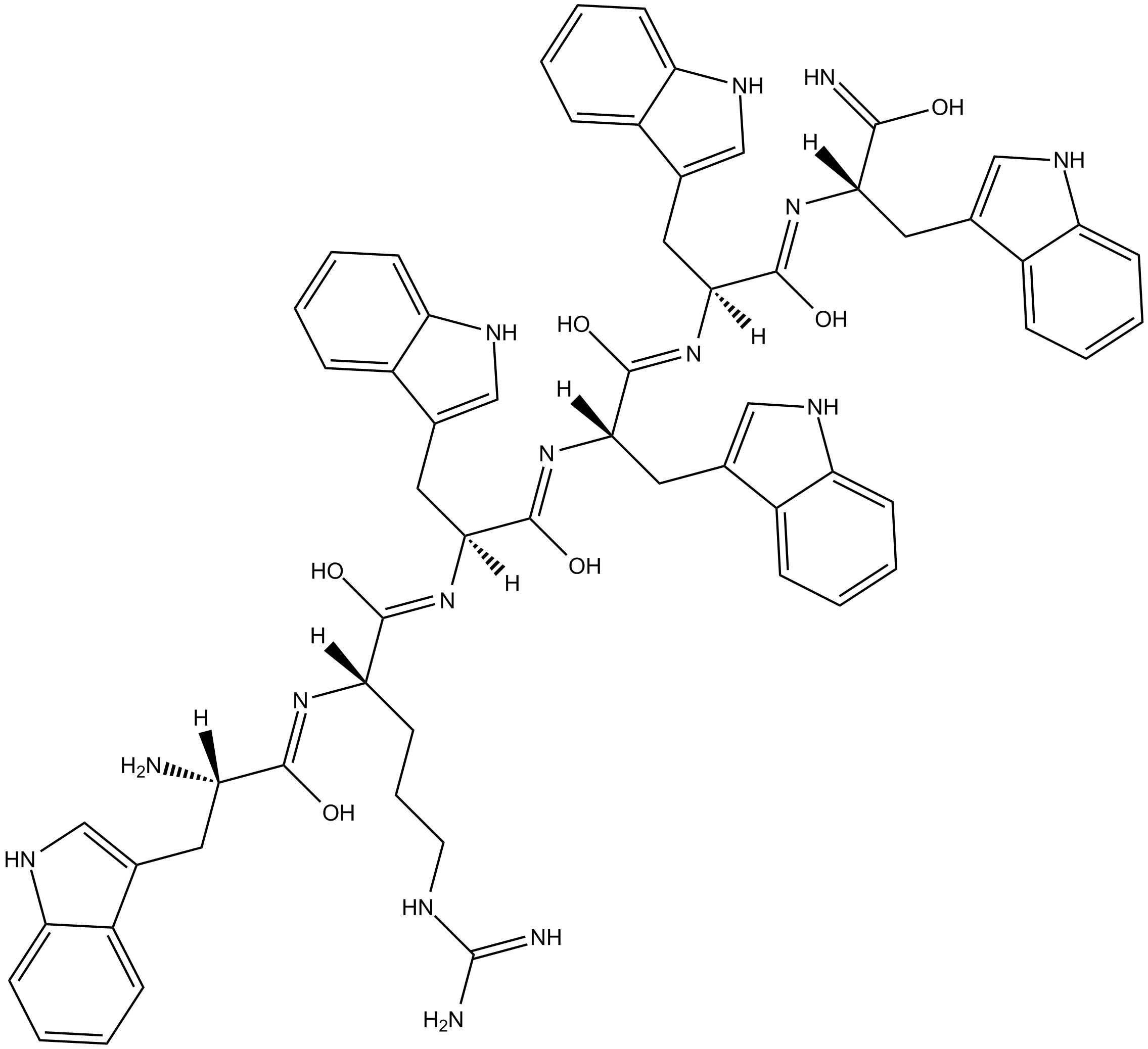 B5283 WRW4Summary: Selective antagonist of formyl peptide receptor 2 (FPR2) signaling
B5283 WRW4Summary: Selective antagonist of formyl peptide receptor 2 (FPR2) signaling -
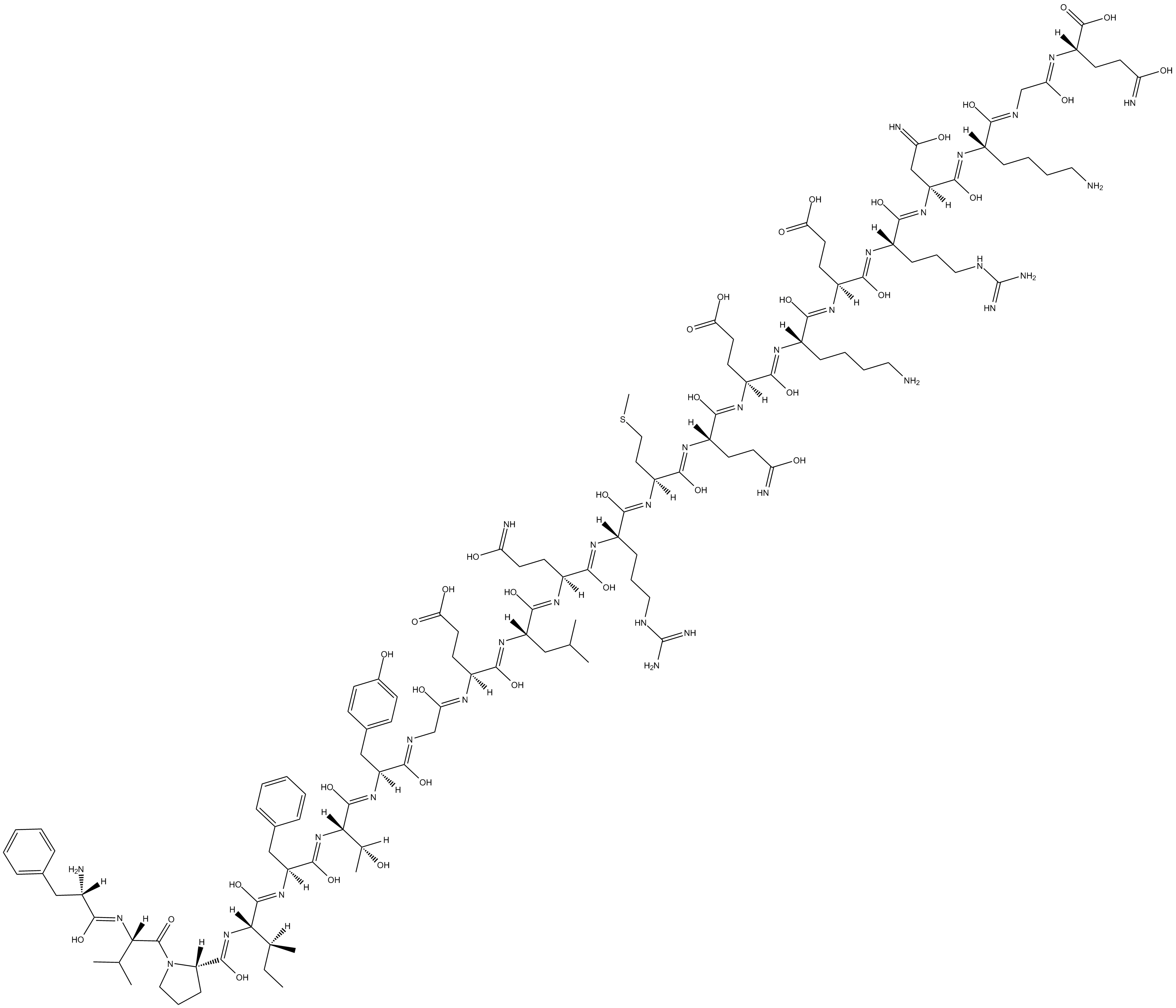 B5284 Motilin (human, porcine)Summary: Endogenous motilin receptor ligand
B5284 Motilin (human, porcine)Summary: Endogenous motilin receptor ligand -
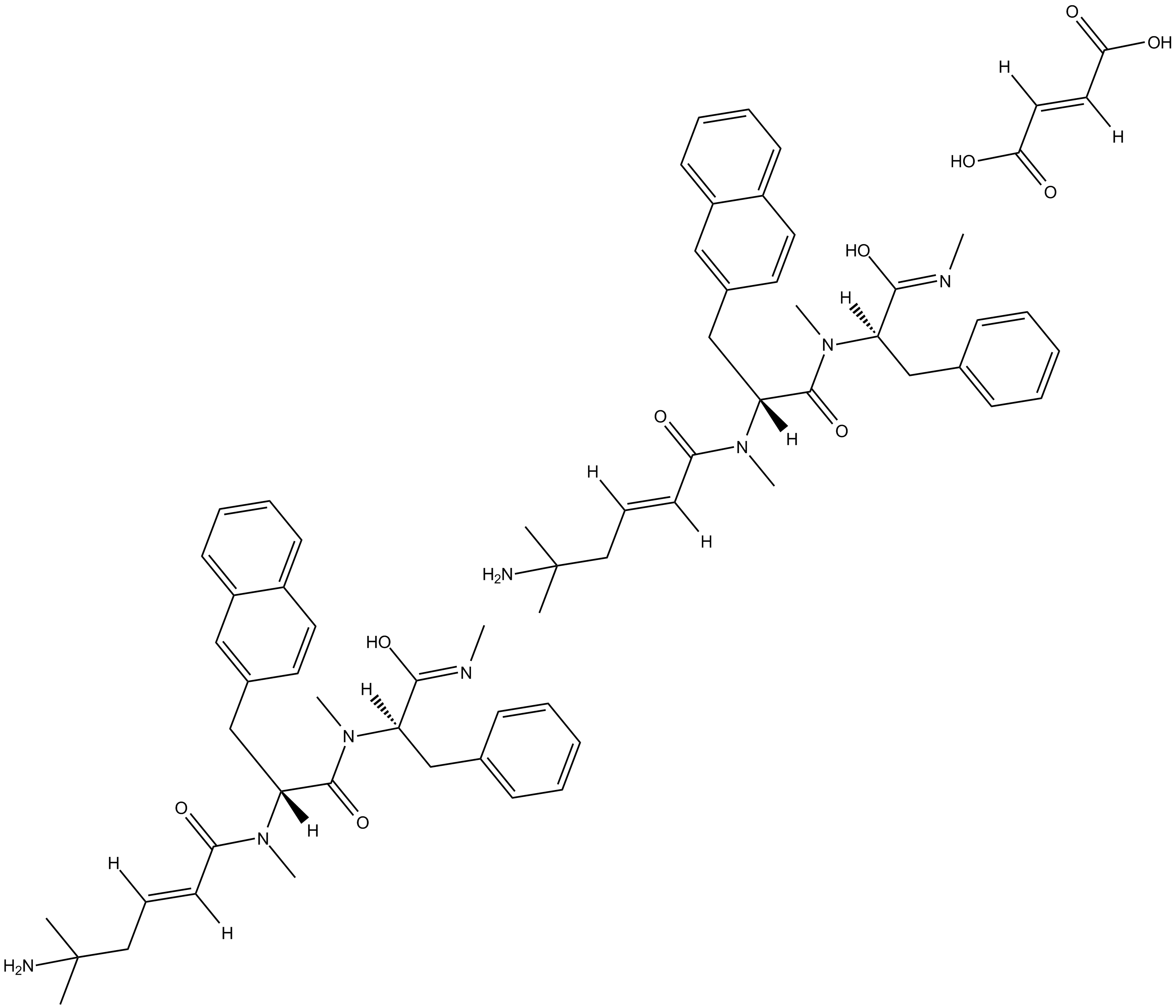 B5287 Tabimorelin hemifumarateSummary: orally active ghrelin receptor (GHS-R1a) agonist
B5287 Tabimorelin hemifumarateSummary: orally active ghrelin receptor (GHS-R1a) agonist -
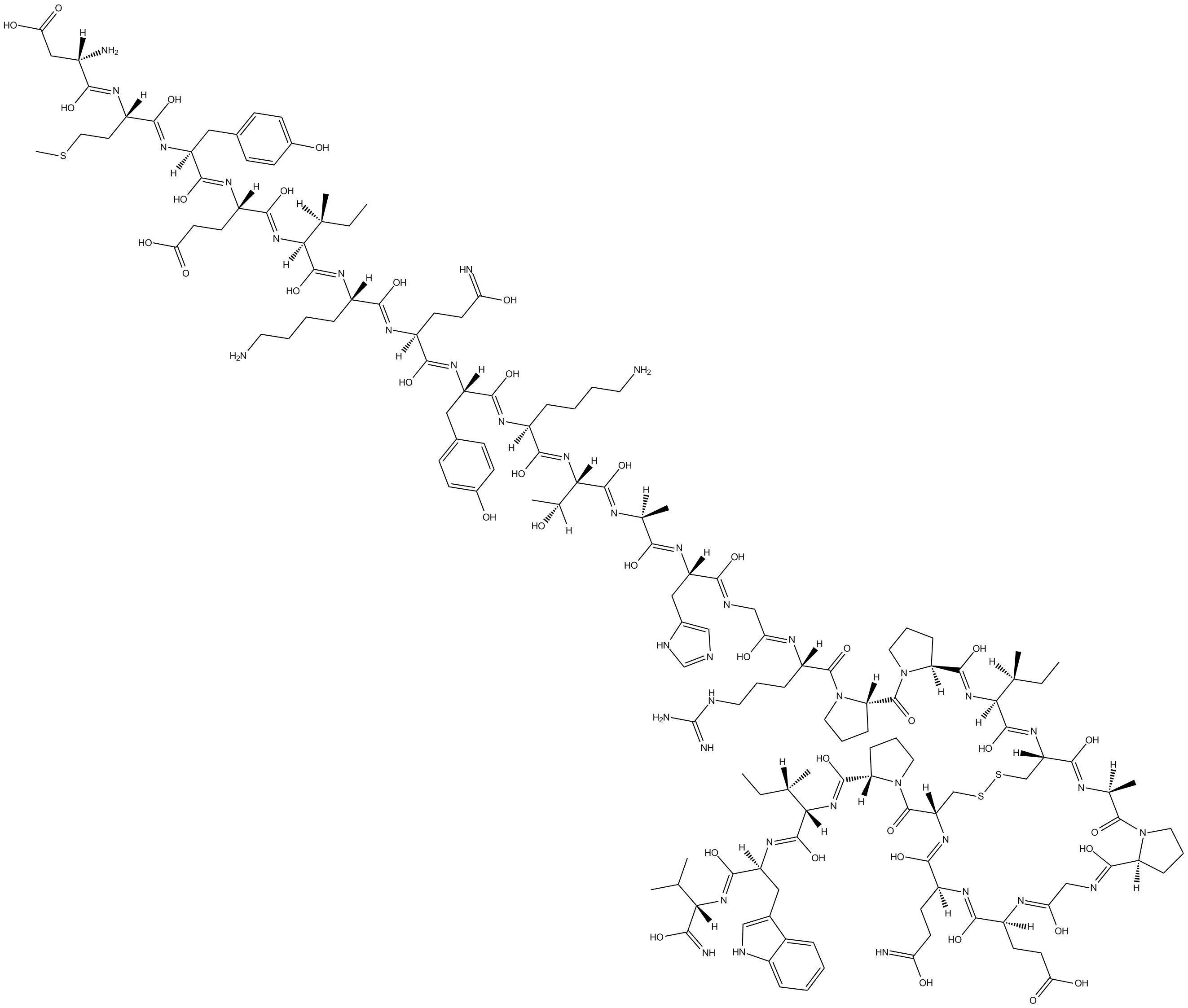 B5296 Bombinakinin-GAPSummary: Bioactive bradykinin-related peptide
B5296 Bombinakinin-GAPSummary: Bioactive bradykinin-related peptide -
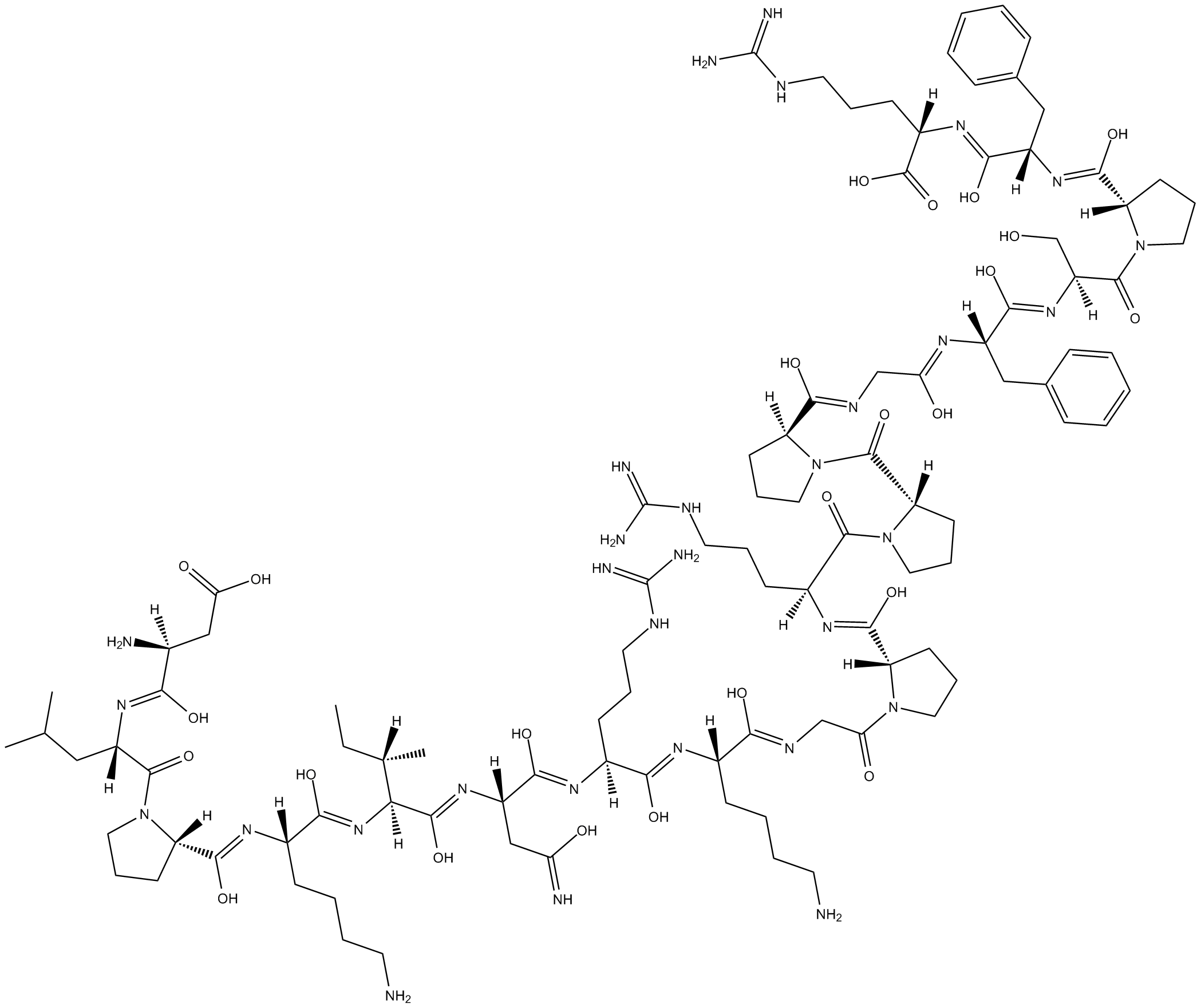 B5297 Bombinakinin MSummary: Potent bradykinin receptor agonist
B5297 Bombinakinin MSummary: Potent bradykinin receptor agonist -
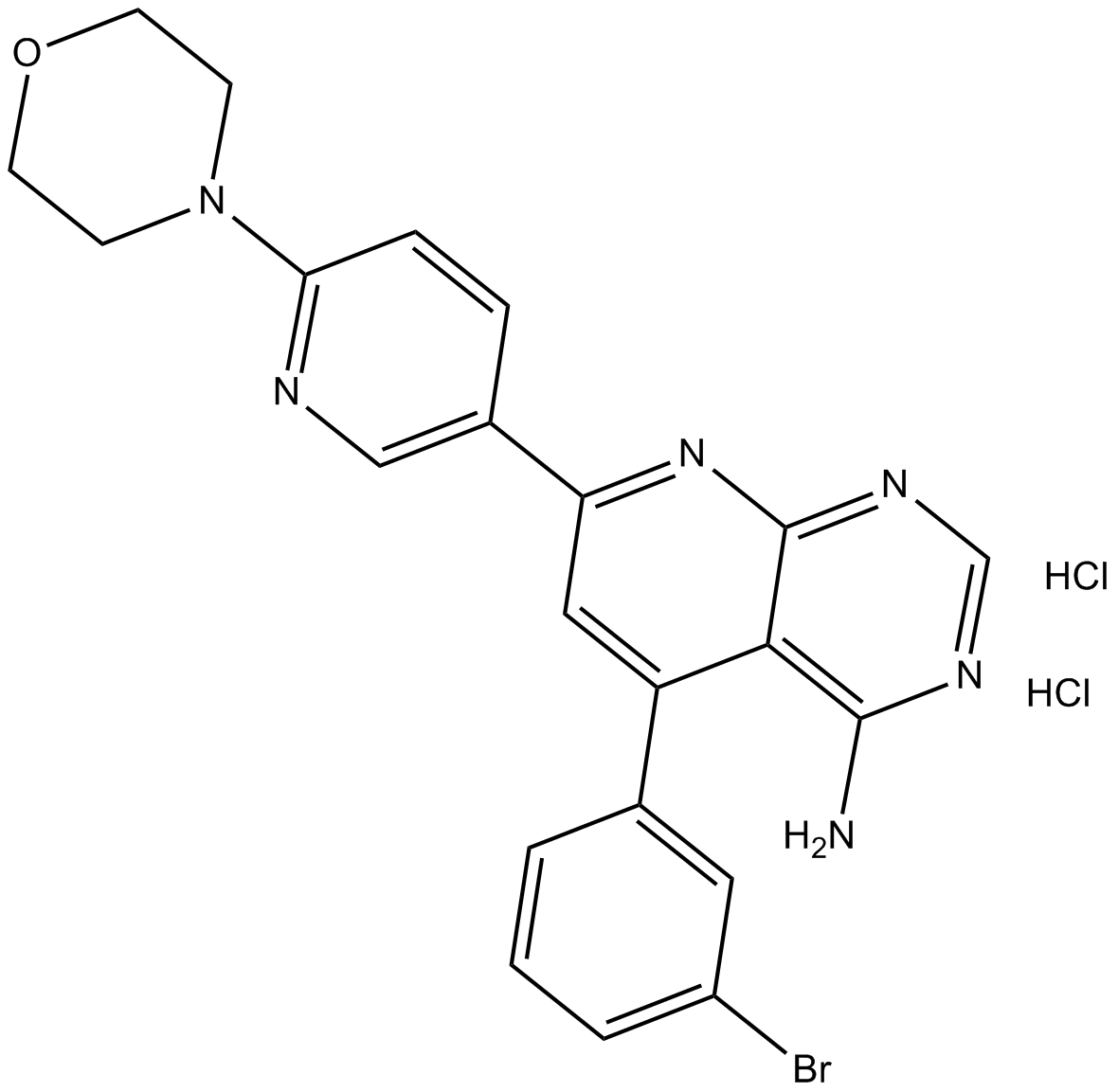 B5298 ABT 702 dihydrochlorideTarget: Adenosine KinasesSummary: Adenosine kinase inhibitor
B5298 ABT 702 dihydrochlorideTarget: Adenosine KinasesSummary: Adenosine kinase inhibitor -
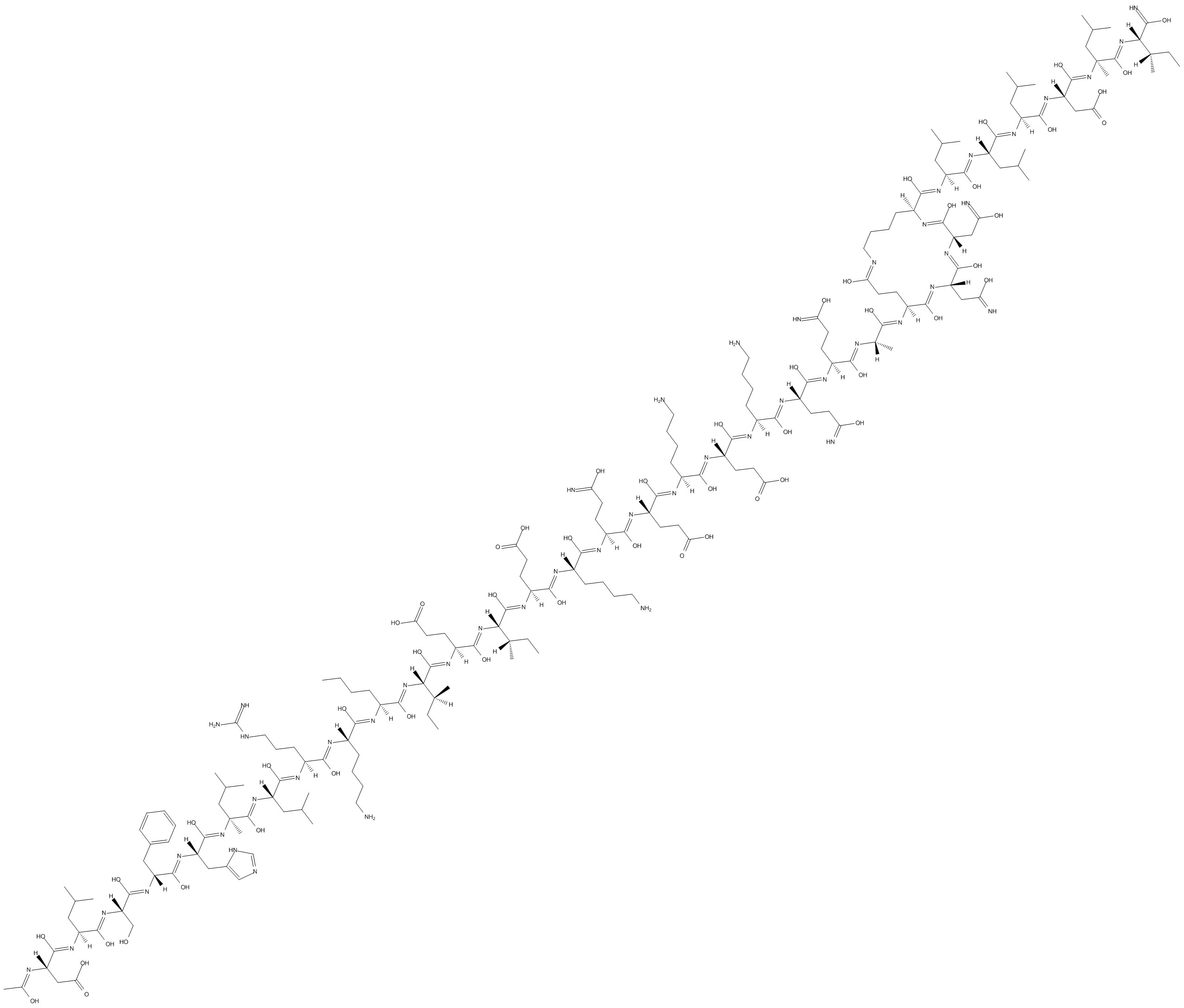 B5299 Astressin 2BSummary: corticotropin-releasing factor receptor 2 (CRF2) antagonist
B5299 Astressin 2BSummary: corticotropin-releasing factor receptor 2 (CRF2) antagonist

